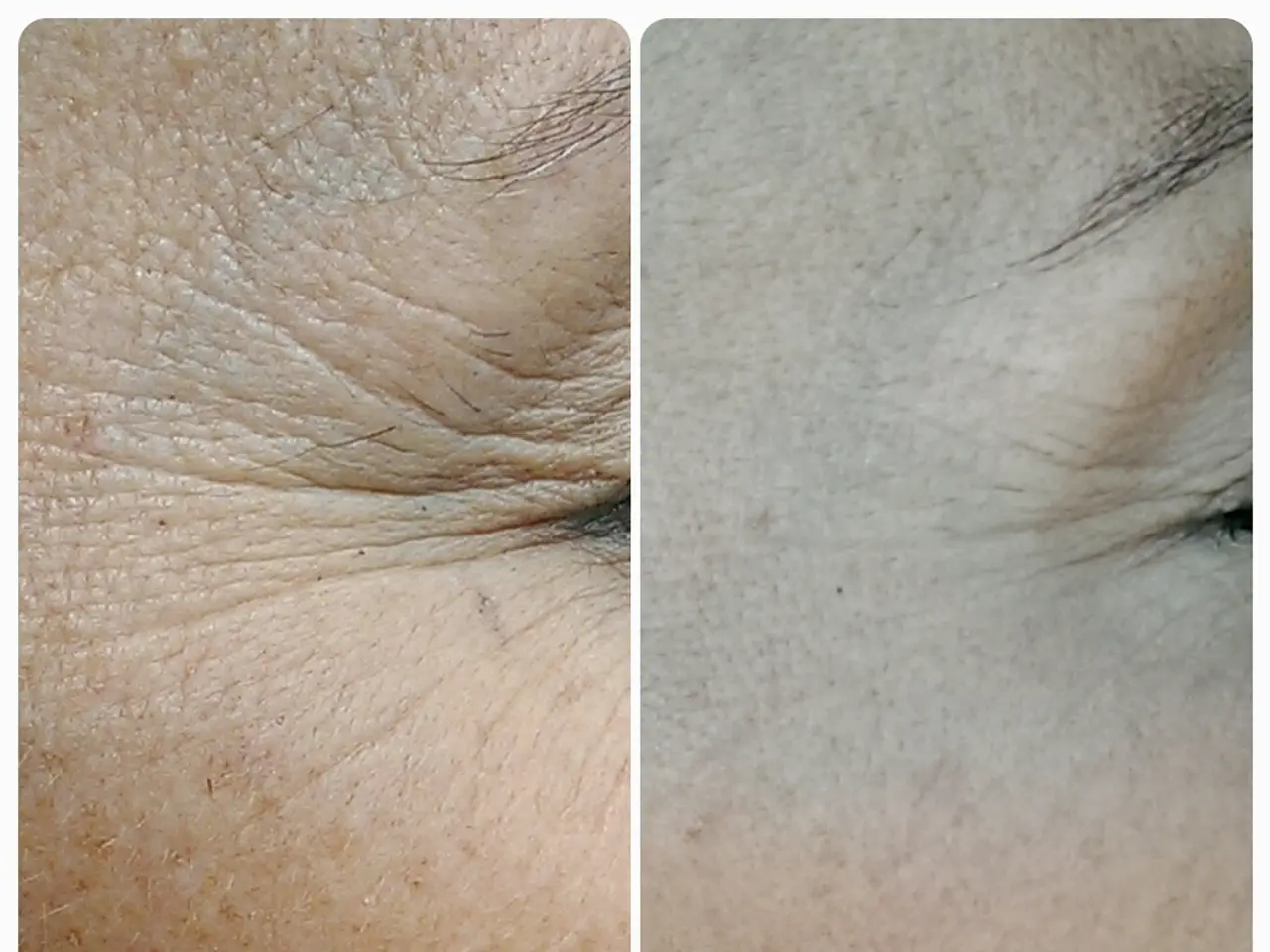Nervous System Core: Architecture, Operations, and Ailments
In the intricate network of the human body, the Central Nervous System (CNS) and Peripheral Nervous System (PNS) are two essential components that work in harmony to facilitate communication and response to internal and external stimuli.
### Central Nervous System (CNS)
The CNS, composed of the brain and spinal cord, acts as the body's control center. It is responsible for receiving, processing, interpreting, and storing sensory information, as well as controlling higher functions such as sensing, perception, thinking, awareness, emotions, and planning. The CNS also handles rapid automatic responses like reflexes directly through the spinal cord, without involving the brain.
### Peripheral Nervous System (PNS)
The PNS, which includes all nerves outside the brain and spinal cord, serves as a communication network linking the CNS to the rest of the body. It transmits sensory information from sensory receptors to the CNS, sends motor commands from the CNS to muscles and glands, and regulates involuntary physiological processes such as heart rate, blood pressure, digestion, and glandular activity.
The PNS can be further subdivided into the Somatic Nervous System (SNS), which controls voluntary movements, and the Autonomic Nervous System (ANS), which manages involuntary functions. The ANS, in turn, is divided into the Sympathetic Nervous System, which prepares the body for "fight or flight" responses, and the Parasympathetic Nervous System, which promotes "rest and digest," calming and restoring the body. The Enteric Nervous System, often called the "brain of the gut," controls digestion largely independently but communicates with the CNS via the ANS.
| Aspect | Central Nervous System (CNS) | Peripheral Nervous System (PNS) | |----------------------------|---------------------------------------------|-------------------------------------------------| | **Components** | Brain and spinal cord | Cranial nerves, spinal nerves, ganglia, sensory receptors | | **Primary Function** | Processing, integrating, and storing information | Transmitting information between CNS and body parts | | **Control Type** | Voluntary and involuntary (higher functions and reflexes) | Both voluntary (somatic) and involuntary (autonomic) control | | **Subdivisions** | None | Somatic NS, Autonomic NS (sympathetic, parasympathetic), Enteric NS | | **Examples of Role** | Thought, perception, reflexes | Movement, sensation, regulation of heart rate and digestion |
In summary, the CNS is the main processing and control center of the nervous system, while the PNS serves as the communication network that connects the CNS to muscles, organs, and sensory receptors, enabling the body to respond appropriately to internal and external stimuli. The CNS and PNS work together to ensure the smooth functioning of the human body.
Some notable components of the CNS include the amygdala, which are involved in decision-making, memory, and emotional responses, particularly negative emotions. Radial glia act as scaffolding for new nerve cells during the creation of the embryo's nervous system. The spinal cord is divided into white and gray matter, with white matter mostly consisting of axons and oligodendrocytes, and gray matter consisting predominantly of neurons.
Glial cells, often called support cells for neurons, are found in both the CNS and PNS but each system has different types. Astrocytes, oligodendrocytes, ependymal cells, radial glia are types of glial cells in the CNS. The olfactory nerves transmit information about odors from the upper section of the nasal cavity to the olfactory bulbs on the base of the brain. The occipital lobe is the visual processing region of the brain, while the temporal lobe is important for processing sensory input and assigning it emotional meaning, laying down long-term memories, and some aspects of language perception.
The cerebellum is mostly involved in precise motor control, but also in language and attention. If the cerebellum is damaged, the primary symptom is disrupted motor control, known as ataxia. The thalamus receives sensory and motor input and relays it to the rest of the cerebral cortex. It is involved in the regulation of consciousness, sleep, awareness, and alertness.
The spinal nerves can coordinate all of the muscles necessary to walk, even without input from the brain. The brain and spinal cord are housed within a protective triple-layered membrane called the meninges. Ependymal cells line the spinal cord and the brain's ventricles and create and secrete cerebrospinal fluid (CSF) and keep it circulating using their whip-like cilia. The spinal cord contains circuits that control certain reflexive responses, such as the involuntary movement of an arm if a finger touches a flame.
The brain contains an estimated 100 billion neurons and 1,000 billion glial (support) cells. Diseases that affect the basal ganglia include Parkinson's disease and Huntington's disease. The medulla oblongata is involved in involuntary functions, such as vomiting, breathing, sneezing, and maintaining the correct blood pressure. Motor commands from the brain travel from the spine to the muscles, and sensory information travels from the sensory tissues towards the spinal cord and finally up to the brain.
The corpus callosum is a broad band of nerve fibers that join the left and right hemispheres. Dyslexic children have smaller corpus callosums; left-handed people, ambidextrous people, and musicians typically have larger ones. The frontal lobe is involved in attention, reward, short-term memory, motivation, and planning. The spinal cord connects with the nerves of the peripheral nervous system (PNS) that run in from the skin, muscles, and joints. The optic nerves carry visual information from the retina to the primary visual nuclei of the brain. Each optic nerve consists of around 1.7 million nerve fibers.
Oligodendrocytes create the myelin sheath, a thin layer that coats nerve cells, allowing them to send signals quickly and efficiently. The hypothalamus secretes a number of neurohormones and influences body temperature control, thirst, and hunger. The parietal lobe integrates sensory information including touch, spatial awareness, and navigation, and plays a part in language processing. The brain uses around 20% of the body's total energy.
Much of the PNS has the ability to regenerate, while the CNS does not have this ability. Astrocytes anchor neurons to their blood supply and regulate the local environment by removing excess ions and recycling neurotransmitters. The brain is protected by the skull and the spinal cord travels from the back of the brain, down the center of the spine, stopping in the lumbar region of the lower back. The nerve axons of the PNS can be up to 1 meter long, whereas within the CNS, they are rarely longer than a few millimeters.
The CNS and PNS, integral components of the human body's intricate network, function symbiotically to ensure smooth communication and response to stimuli. Though the CNS, encompassing the brain and spinal cord, serves as the body's control center, the PNS, composed of all nerves external to the CNS, acts as a communication network linking the CNS to the rest of the body.
The PNS can be divided into the Somatic Nervous System (SNS) and Autonomic Nervous System (ANS), with the latter further subdivided into Sympathetic and Parasympathetic divisions. The SNS controls voluntary movements, while the ANS handles involuntary functions like heart rate, blood pressure, digestion, and glandular activity. Noteworthy CNS components include the amygdala, involved in emotion and memory, the thalamus, responsible for sensory and motor relay, and the cerebellum, crucial for motor control and coordination.
The CNS and PNS differ in their potential for recovery from medical conditions. While much of the PNS exhibits regenerative abilities, the CNS, unfortunately, does not. Conditions such as Parkinson's and Huntington's diseases affect the basal ganglia within the CNS, impacting motor control and coordination. Simultaneously, certain medical conditions like ulcerative colitis and Crohn's disease (collectively termed inflammatory bowel disease or IBD) affect the enteric nervous system within the PNS, causing GI disturbances.
In addition to IBD, other medical conditions such as psoriatic arthritis, multiple sclerosis, Alzheimer's disease, HIV, depression, hepatitis, bipolar disorder, migraine, and eczema can affect various aspects of health and wellness, including the nervous system. Predictive science and medical research contribute significantly to understanding these conditions better, facilitating improved diagnostics, treatment, and ultimately, improved quality of life for those affected.




